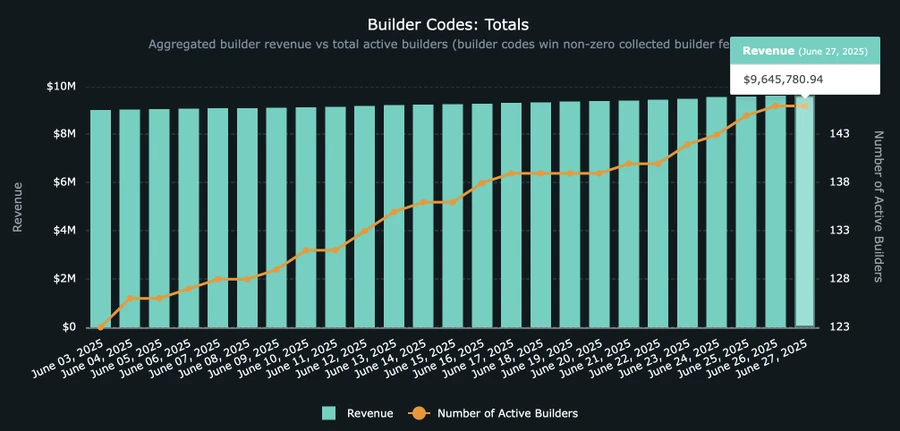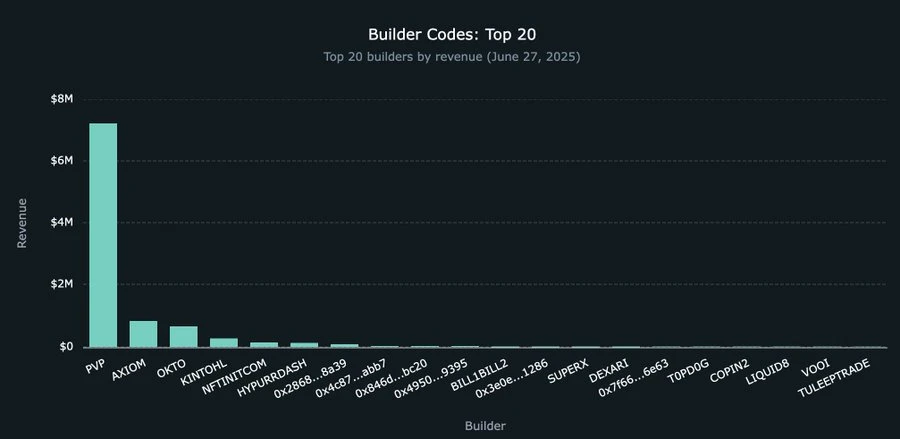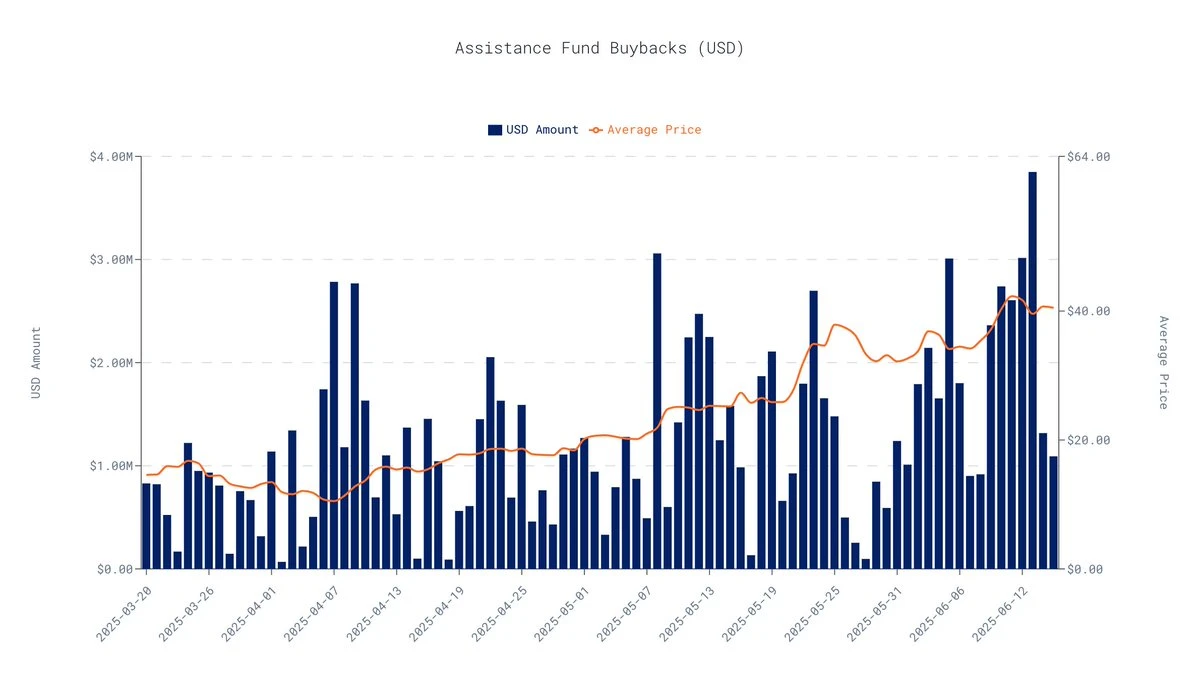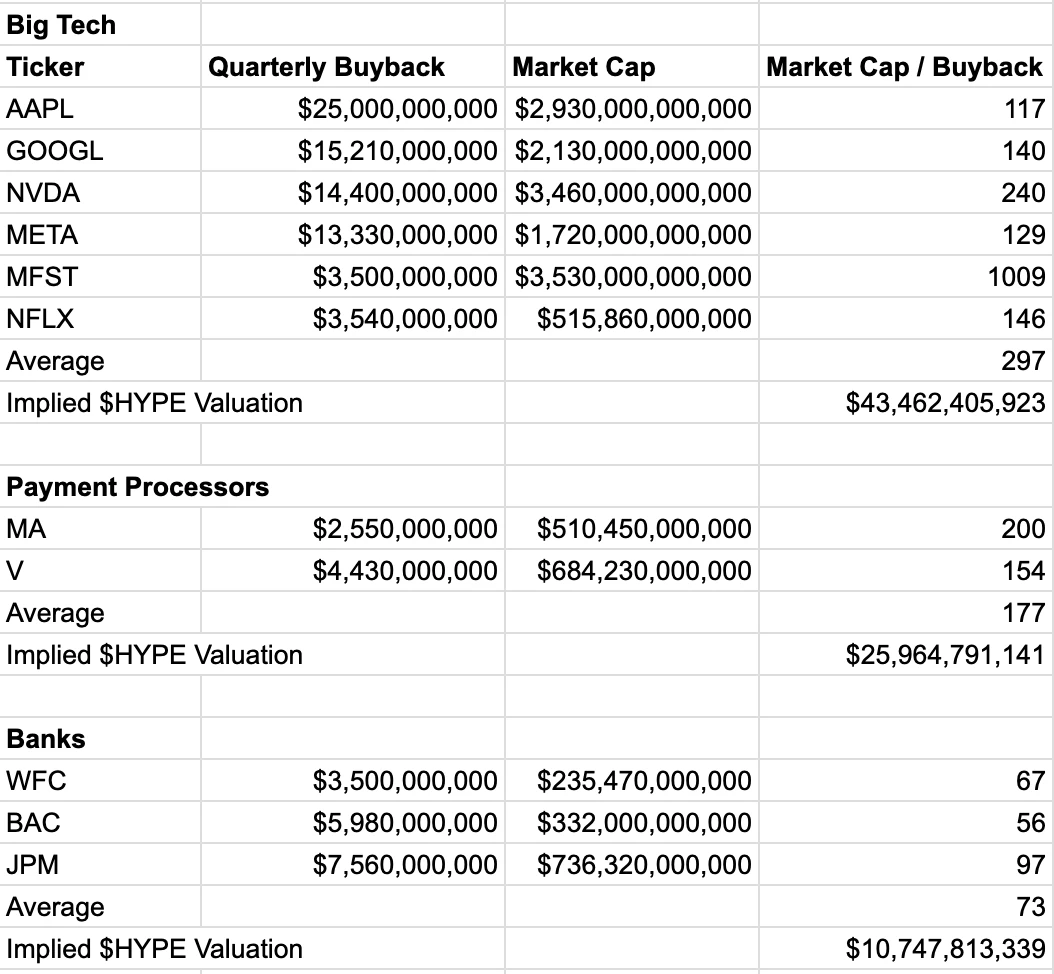Original Author | Charlie.hl (@0xBroze)/supermeow.hl (@supermeower)
Compilation | Odaily Planet Daily (@OdailyChina)
Translator | Dingdang (@XiaMiPP)
Editor's Note: Recently, the US-listed companies Lion Group Holding and Eyenovia announced that they would include Hyperliquid's native token HYPE in their balance sheets. This marks the first time that traditional capital markets have listed the native tokens of emerging DeFi projects as strategic reserve assets, following BTC, ETH, BNB, SOL, TRX, and XRP. This move signifies institutional recognition of HYPE's safety, stability, and the economic model behind it, indicating that Hyperliquid is no longer just an on-chain trading protocol but is gradually becoming a mainstream candidate for "digital asset financial infrastructure."
This article integrates the research findings of Charlie.hl and supermeow.hl, analyzing from two dimensions: 1. How Builder Code drives protocol revenue and ecological expansion; 2. How the protocol's buyback mechanism constructs a valuation model for HYPE.

As the revenue from Hyperliquid's Builder Code approaches $10 million, it is necessary to conduct an in-depth analysis of this emerging ecosystem and its underlying applications, exploring its profound implications for Hyperliquid's future direction at the infrastructure level. It is uncommon for a protocol to dominate both the application and infrastructure layers simultaneously, and Hyperliquid is steadily moving in this direction, with the concept behind its Builder Code becoming increasingly clear.
Builder Code: The Revenue Engine of an Open Trading Ecosystem
For readers who are not yet familiar with the Hyperliquid ecosystem, what exactly is Builder Code? How does it work?
As stated in the official documentation: "Builder Code allows developers to charge a fee for executed orders on behalf of users. Each order can have a separate Builder Code set for maximum flexibility. Users must set an acceptable maximum fee for each developer and can revoke authorization at any time. Builder Code is fully processed on-chain, as part of the fee logic."
In simpler terms, Builder Code enables applications built on Hyperliquid to charge fees based on the volume of transactions they bring in. Any platform can integrate Builder Code, and users must authorize transactions before trading to accept this fee mechanism (this process can currently be seen on the newly launched Felix Trade, which supports calling Hyperliquid's spot trading features through @felixprotocol).

Builder Code Total Revenue: HypeBurn Data
How much revenue can Builder Code generate for developers? The current maximum fee allowed by the protocol is: perpetual contracts 0.1%, spot trading 1%.
Although a 1% spot trading fee may sound high and is not yet widely adopted, as more long-tail assets go live on Hyperliquid, this rate may become the norm. For example, Axiom, which focuses on meme coin trading on Solana, generates over $1 million daily from a 1% interface fee. While most of this revenue comes from Solana, as the number of spot deployers on Hyperliquid gradually increases, such revenue is expected to shift to Hyperliquid.

Who is Leading Builder Code? Where is it Heading?
Despite rapid growth, the overall revenue from Builder Code is still in its early stages, currently totaling about $9.5 million. Among them, @pvpdottrade leads with approximately $7.2 million, making it the highest-earning Builder at present. But this is just the beginning.
Currently, more than 22 new developers have begun participating in the ecological construction of Builder Code, driving more trading volume into Hyperliquid. Among them, the closest to a truly consumer-grade product is @okto_web3. Although its revenue from Builder Code is only $662,000 at present, this figure may change significantly in the future as its business covers more than just Hyperliquid.
It is worth noting that Okto remains a typical crypto-native application, while platforms like Liquid and Lootbase target a broader ordinary user market, providing a trading experience similar to Robinhood, which may be more appealing. Initially, it was expected that Builder Code would only be adopted by existing crypto interfaces (like Axiom) to call upon HL's underlying infrastructure. However, trends from Liquid and Lootbase suggest that this assumption may need to be revised.

Top 20 Builder Code Apps
However, Hyperliquid is not just a perpetual contract DEX; it is a set of trading infrastructure. This will become increasingly clear as more large trading platforms choose to integrate Hyperliquid's Builder Code rather than compete directly with it.
In this model, platforms no longer need to build their own markets or pull liquidity to launch new tokens; instead, they can achieve permissionless token listing through Hyperliquid's spot deployment and the upcoming HIP-3 proposal, then integrate Builder Code to create optimal interfaces and user experiences, generating substantial revenue like Axiom and PvP Trade.
The future of Builder Code will depend on whether large interface platforms with strong distribution capabilities, which wish to avoid the costs and risks of building their own markets, choose to join in.
Robinhood and Hyperliquid Builder Code: A Possibility
Taking Robinhood as an example, this is a more traditional, non-crypto-native fintech company. If it wishes to accelerate the adoption of crypto assets within its application and achieve large-scale fee revenue, Hyperliquid offers a viable path. In January 2025 alone, Robinhood reported up to $144.7 billion in stock trading volume, 166.6 million options contracts, and $20.4 billion in crypto asset trading volume.
This aspect may warrant a separate article for in-depth analysis, but it is foreseeable that Robinhood could start deploying its market based on Hyperliquid's optimized and battle-tested infrastructure for perpetual contracts by investing around 1 million HYPE (a negligible amount for its capital size) and capturing interface layer fee revenue through interface integration with Builder Code.
For Robinhood, this architectural decision could not only save months or even years of development time but also reduce technology investment costs by millions of dollars. The underlying work is completed by the Hyperliquid community, allowing Robinhood to reap the benefits.
HYPE Token Valuation Analysis
Builder Code demonstrates Hyperliquid's monetization capabilities at the infrastructure layer, and if Builder Code is the front-end "distribution layer" driving the prosperity of the trading ecosystem, then the HYPE token is the core value carrier within this system. By comparing Hyperliquid's protocol-funded buyback actions with traditional public company stock buybacks, this analysis attempts to value the HYPE token.
Using payment processing companies like Visa and Mastercard as a conservative reference group, this method yields an implied valuation of HYPE at $25.9 billion (i.e., approximately $76 per HYPE, a 72% increase from the current price of $44). It is important to note that this valuation does not yet include the extensive use of HYPE as a Layer-1 native asset.
The following section elaborates on this valuation method.
Quantifying Capital Returns
According to on-chain data from the past 30 days as of June 16, 2025, the daily buyback amount of the Hyperliquid protocol is $1.63 million. Based on this, the quarterly buyback total is approximately $146.4 million.

Data from data.asxn.xyz
To assess the market valuation of cash flow-like assets, we refer to the "market capitalization / quarterly buyback amount" multiple for publicly listed companies. This multiple reflects how much market value investors are willing to assign for each dollar of buyback activity, with significant differences across industries, reflecting market confidence in their growth and stability.

Comparison of multiples across industries:
Tech Giants (Average Multiple: 296x): Companies like NVIDIA and Google are assigned extremely high valuations due to their rapid growth, technological innovation, and market dominance.
Payment Industry (Average Multiple: 177x): Companies like Visa and Mastercard, as high-profit financial infrastructures with strong network effects, have stable and relatively high multiples.
Banking Industry (Average Multiple: 73.3x): Companies like JPMorgan and Bank of America are mature institutions with slower growth and significant regulatory pressure, resulting in lower valuation multiples.
Among the comparisons above, the payment industry aligns most closely with Hyperliquid's business model. Like Visa or Mastercard, Hyperliquid is a key infrastructure in the financial system: it has high profit margins, its business model is directly linked to transaction volume, and its network effects continue to strengthen—the more users and liquidity, the greater the platform's value.
Although HYPE can be compared to tech companies in some aspects, using tech industry valuation multiples would lead to exaggeration and lack practical reference. In contrast, the payment industry's valuation multiples are more conservative and comparable.
After applying the payment industry multiple, the implied valuation of HYPE is:
Estimated Quarterly Buyback Amount: $146.4M
Payment Industry Valuation Multiple: 177x
Implied Valuation: $146.4M × 177 = $25.9B
HYPE Unit Price: Approximately $76 (an increase of about 72% from the current $44)
Note: $44 is the value of HYPE at the time of this article's publication.
This valuation is not only substantial but also highly conservative. It is based on a core metric and deliberately ignores other multiple sources of value that HYPE possesses. Why is this valuation considered conservative?
Focus on a Single Dimension: This model completely disregards the value premium of HYPE as a high-performance Layer-1 native token, its role in governance mechanisms, or potential staking rewards in the future.
Based on Historical Data: The data used only reflects the past 30 days' performance and does not account for potential increases in buyback amounts due to future revenue growth or market share gains for Hyperliquid.
The model uses the average valuation multiple from the payment industry, avoiding the high multiples commonly seen in the tech industry, further ensuring the conservativeness of the valuation.
Summary: The Buyback Framework Provides a Clear Valuation "Floor" for HYPE
Although no single method can cover the entire value of crypto assets, anchoring the valuation to strong protocol buybacks and combining it with real cash flow indeed provides a data-supported value benchmark for HYPE. As the Hyperliquid ecosystem continues to develop, this valuation "floor" is expected to rise continuously.
免责声明:本文章仅代表作者个人观点,不代表本平台的立场和观点。本文章仅供信息分享,不构成对任何人的任何投资建议。用户与作者之间的任何争议,与本平台无关。如网页中刊载的文章或图片涉及侵权,请提供相关的权利证明和身份证明发送邮件到support@aicoin.com,本平台相关工作人员将会进行核查。



